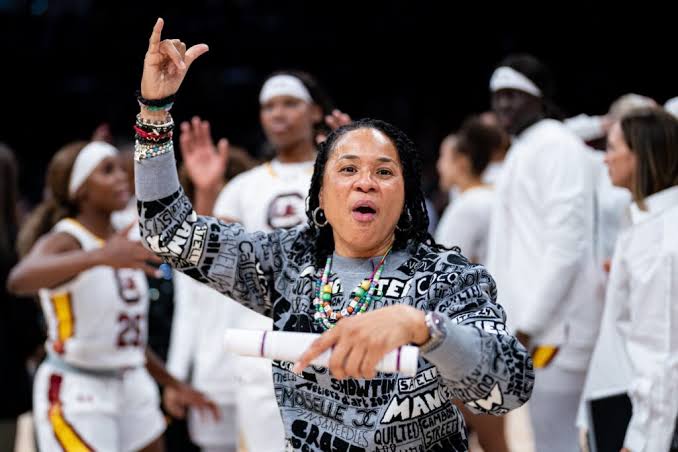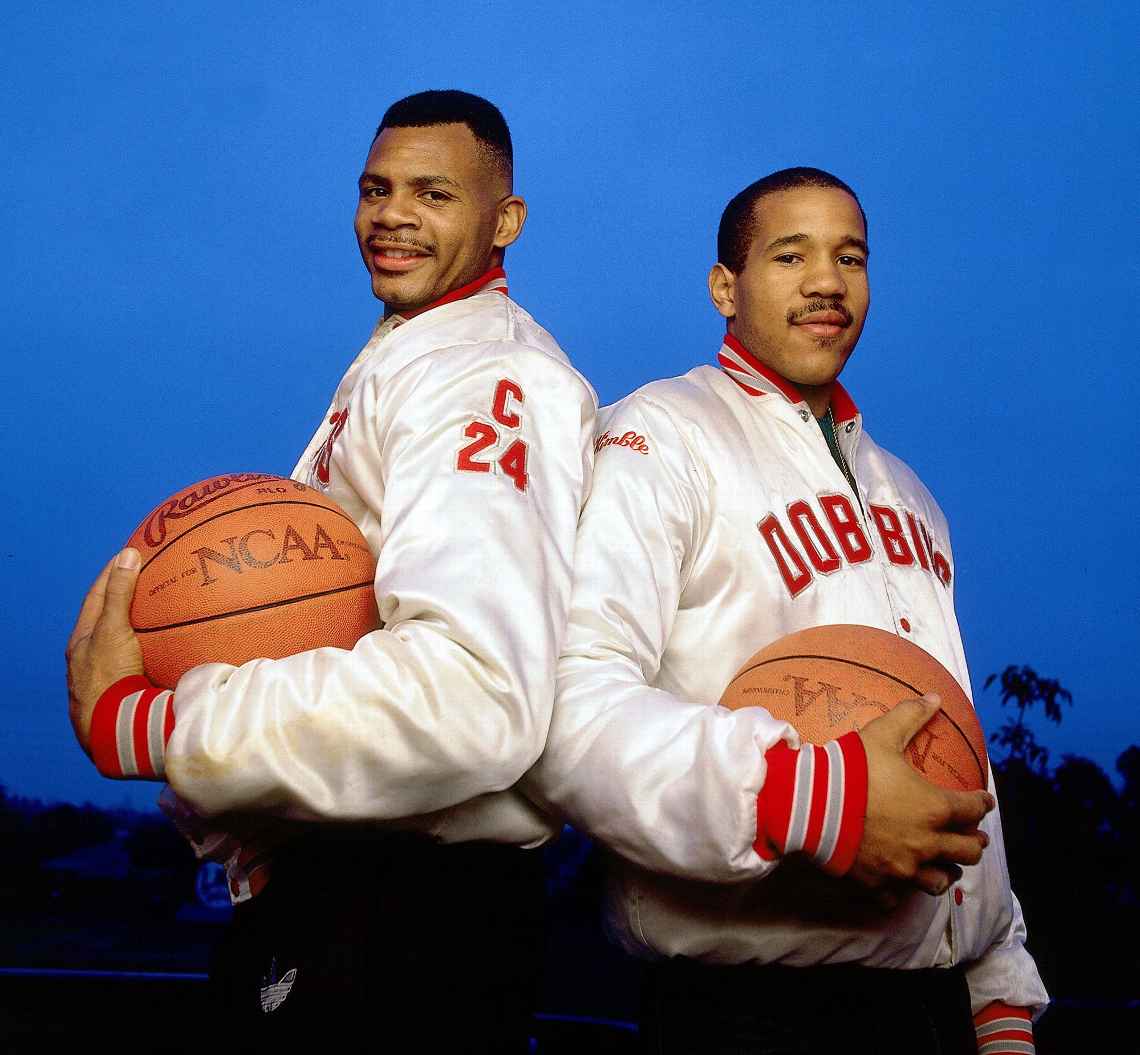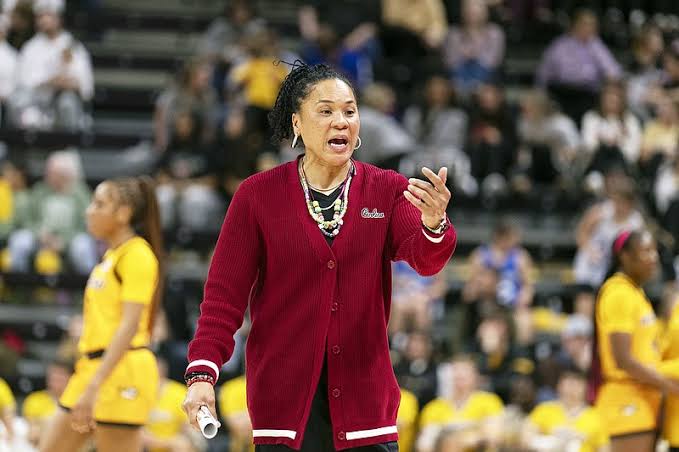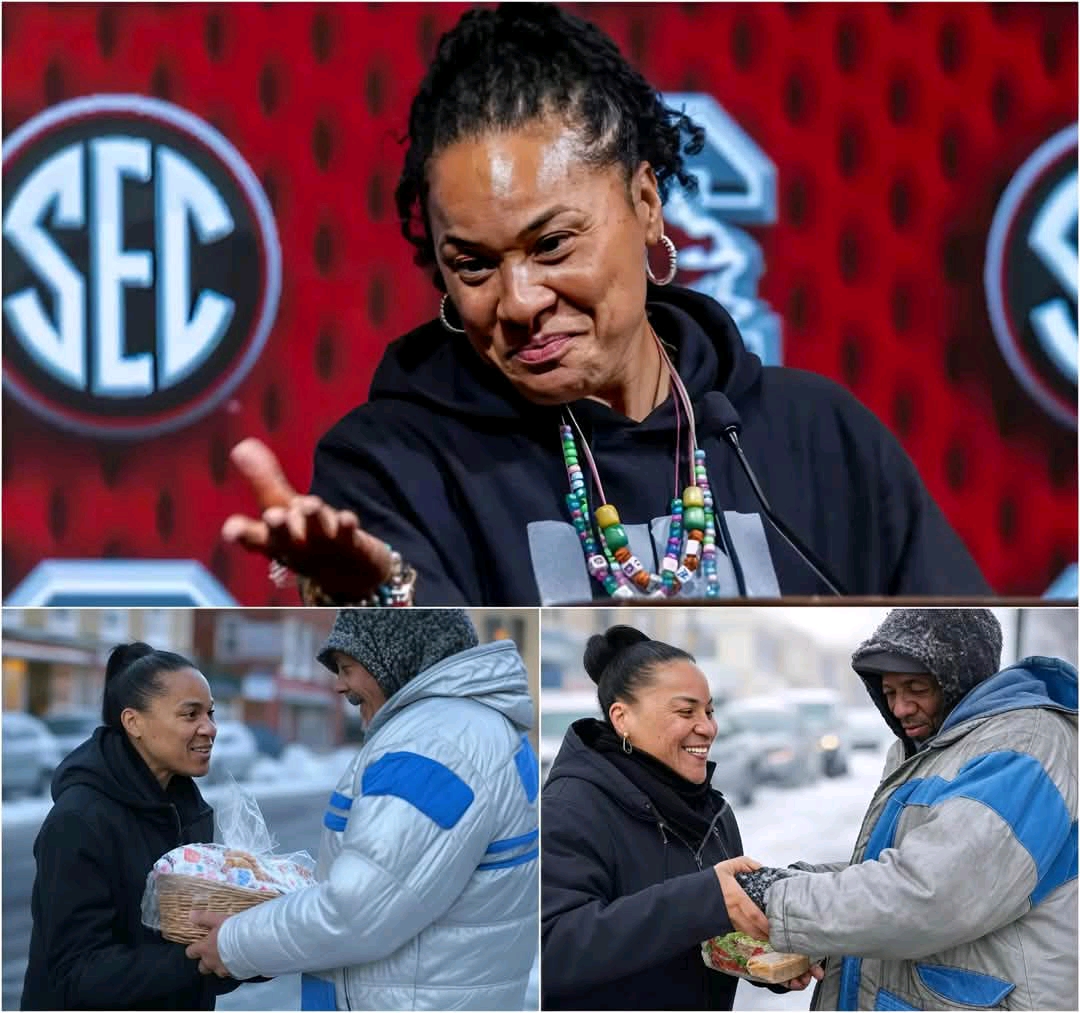
ALMOST 40 YEARS ago in North Philadelphia, Dawn Staley was walking home from high school one afternoon with a friend from the neighborhood, when something remarkable happened. Or more to the point, didn’t happen.
She lived in a rowhome in the Raymond Rosen housing projects. Her friend, Charles Gathers, had grown up in the high rises across Diamond Street but had recently moved to Staley’s side of the projects. The two of them, and Gathers’ cousin Patrice, were making their way back to Raymond Rosen, he remembers, when a man jumped in front of them and tried to grab Patrice. Another man, this one with a knife, followed on his heels. Gathers was about to step in, when the men recognized Staley — that short girl who can play basketball with any boy. Whatever their plans were, Gathers recalls, seeing Staley changed their minds. The men retreated. Basically vanished.

This was the nature of Staley’s slice of the city: “If you lived in a certain area, you couldn’t go outside your area to even play a game, because of the various gang affiliations,” says Doyt Jones, who was one of Staley’s high school coaches. But with Staley, “Nobody was going to threaten her or anything like that, because they recognized her athletic ability.”
Her game was her passport. She was small but played big. She was young but played old. She was a girl but had no problem playing against the boys. Her game felt as if it were made for Philadelphia, made of Philadelphia, brimming with the same “extraordinary mental and physical toughness” Bo Kimble says the city and its people did. Kimble, who grew up in North Philly, played college ball in Southern California and professional ball all over the world, but nothing, he says, was tougher than Philly ball.
By the time Staley was approaching high school, the legend of Dawn Staley, Philly baller — that short girl who can play with any boy — had traveled as fast as those would-be aggressors disappeared into the North Philadelphia ether.
“She had gained the respect of the entire city,” Kimble says.
Now, Staley is vying for her fourth national championship as head coach of the South Carolina women’s basketball team. There’s been a Geno Auriemma era, and a Pat Summitt era, and Staley is working to cement a new age. The Dawn Staley era. At 54, she has reached near-mythical heights on the basketball court — first as a player, then as a coach — but it’s the tale of a near run-in on a street in North Philadelphia that gets to the heart of her enduring resonance in all the places this game has taken her.


Dawn Staley has always meant something more on the ground she walks on. She has transcended the game in the places she has called home.
STALEY IS GROUNDED now, stopped in a tunnel at Colonial Life Arena in Columbia, South Carolina.
Thirty minutes after South Carolina defeated Kentucky in its regular-season finale, long after the Gamecocks locked in a share of the SEC regular-season title — their ninth, and fourth in a row, all under Staley — the coach is still attending to the masses.
There’s a stocky man, who looks to be some sort of security detail, doing his level best to usher her away from the court and the throng of fans who are still lining either side of the tunnel, jockeying for her signature, or a selfie, or a shred of her time. His efforts are mostly thwarted. It’s the first Sunday in March, and the people who flock to Colonial Life Arena in NCAA record-breaking droves — last season, more than 270,000 — are in church.
Staley is finally about to head all the way inside when she stops short at the sound of a fan screaming her name. She looks up and shouts back, a whiff of hope in her voice.
“You from up north?”
He’s not.
“Then why am I hearing Doooooawn?”
She rounds those oh’s, like the Philadelphian she is, stretching them long and slow, massaging her name into something more than two syllables.

The first time Darrell Gates remembers hearing Staley’s name was in high school, at his teammate’s house in Raymond Rosen. Gates lived up the street, but on the way to Dobbins, the school where they all attended and played basketball, he’d pass through the neighborhood, just a few blocks from the Moylan Rec Center.
For years, Cheryl Hardy worked at the center on Diamond Street, and she’d open the gymnasium at night for Staley to play ball by herself. The center had a slippery old parquet floor and no glass backboard on the hoops. “It was horrible,” says Jimmy Richardson, who grew up with Staley and now works alongside Hardy at the center. “But we didn’t care. It was our Garden.”
These days, it’s called the Hank Gathers Recreation Center. Like Staley, Gathers was a local legend whose talent took him far from Philadelphia. In 1989 at Loyola Marymount, he became the second player in NCAA history to lead the nation in scoring and rebounding; he died a year later, collapsing on the court because of a heart muscle disorder. A mural of Gathers now sits alongside one of Staley on the walls of the rec center, keeping watch over the indoor courts.

It was Gathers who first alerted Darrell Gates to a thrilling ninth grader named Doooooawn Staley. He nudged a tape into the VCR and told his friend to watch this girl’s game film. “We were sitting on the edge of the couch,” Gates says, “We couldn’t believe what she was doing. We were just sitting up there laughing because we just couldn’t believe it.”
She’d have her back turned to a defender, then lob a pass over their head. She’d throw the ball through some poor sap’s legs. Her otherworldly ability to find her intended target made Gathers and Gates intent on seeing more, and before practice, they’d sneak over to watch her games at Dobbins. They’d spread the word about Staley to teammates such as Kimble. “Nobody can stop her,” Kimble recalls of their breathless reviews. “The fellas can’t stop her.”
Leave a Reply